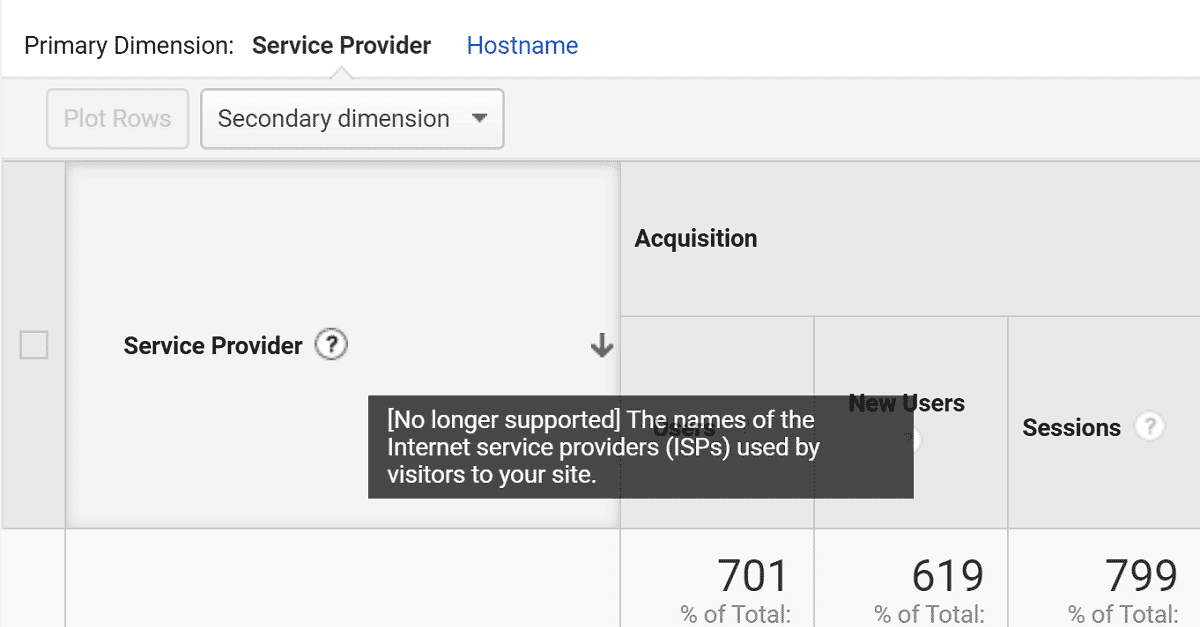Browsing the Midst of Secondary Dimension in Google Analytics: A Comprehensive Exploration on Its Capability
In the realm of electronic analytics, the intricacies of data analysis usually hold the trick to unlocking important understandings. Within the extensive toolkit of Google Analytics exists an attribute that works as a hidden gem for those that look for a much deeper understanding of user actions and site efficiency. Second measurements, though apparently straightforward in the beginning look, harbor a wealth of untapped possible waiting to be harnessed. As we embark on this trip to explore the nuanced functionality of additional measurements, we will discover exactly how this feature can light up patterns, unveil connections, and inevitably pave the way for informed decision-making in the digital landscape.
Understanding Secondary Dimensions in Google Analytics

Comprehending how second dimensions work is essential for leveraging the complete power of Google Analytics. These measurements aid you address more intricate concerns concerning user habits and the efficiency of your internet site content and advertising and marketing efforts. You can make use of additional dimensions to assess which tools or web browsers are most generally made use of by site visitors who make a purchase, or to contrast the bounce rates of different web traffic resources. By incorporating key metrics with second dimensions, you can get valuable understandings that drive notified decision-making and optimization methods - what is a “secondary dimension” in google analytics?.
Leveraging Secondary Measurements for Information Analysis
Structure upon the foundational understanding of how second dimensions improve data evaluation in Google Analytics, the use of these extra layers of details ends up being extremely important in drawing out valuable understandings for notified decision-making and optimization strategies. By leveraging secondary measurements, experts can dig much deeper into the efficiency metrics by adding even more context to the key dimensions, hence uncovering concealed patterns and connections that could not appear in the beginning glimpse. This much deeper level of analysis makes it possible for companies to much better understand individual actions, identify patterns, and determine areas for renovation.
Moreover, additional measurements offer an even more comprehensive view of the information, permitting for segmentation based on numerous criteria such as demographics, devices, traffic sources, and more. This division facilitates a much more granular analysis, making it possible for businesses to customize their strategies and campaigns to certain audience sections for boosted targeting and personalization. Fundamentally, the critical use secondary dimensions equips organizations to make data-driven decisions that drive growth and success in the electronic landscape.
Advanced Methods for Second Measurement Implementation
Checking out elaborate techniques to harness the complete potential of second dimensions in Google Analytics boosts the deepness and elegance of information evaluation for critical decision-making. One innovative technique for applying second measurements is the use of personalized measurements. Furthermore, combining additional measurements with advanced sections can give even extra granular understandings by applying several layers of division to the data.
Interpreting Insights Via Second Measurements

When translating insights via secondary dimensions, it is necessary to consider the context of the data and how various measurements interact with each other. Understanding which details web traffic sources lead to greater conversion prices or identifying which tools customers like for making acquisitions can provide actionable understandings for optimizing advertising and marketing campaigns and enhancing overall site performance. By carefully checking out the data with additional measurements in mind, companies can make enlightened choices that drive purposeful results and boost their electronic visibility.
Optimizing Efficiency With Second Measurements

One crucial means to enhance performance with additional dimensions is by segmenting data more granularly. This permits you to separate certain elements that may be affecting your metrics and get a much better understanding of what drives success or failure in your digital campaigns. By integrating second dimensions such as 'tool group' and 'landing page,' you can determine which gadget types are most reliable for specific touchdown web pages, allowing you to customize your approaches accordingly.
Moreover, making use of second dimensions can aid you identify trends, patterns, and relationships that might not appear when assessing information with key dimensions alone. This much deeper level of evaluation can bring about even more informed decision-making and eventually boost the overall performance of your website or digital advertising projects.
Final Thought
In verdict, second measurements in Google Analytics play a crucial function in boosting information analysis and giving much deeper insights into website efficiency. By using advanced techniques and analyzing the information successfully, organizations can optimize their techniques and enhance total efficiency. Comprehending the performance of second dimensions is crucial for making educated choices and driving success in the electronic landscape.
By leveraging secondary dimensions, experts can dive deeper right into the performance metrics by including more context to the key dimensions, hence discovering page surprise patterns and connections that might not be evident at first glimpse. One innovative method for applying additional measurements is the use of customized measurements.Having understood advanced methods like personalized dimensions and regex for second dimension execution in Google Analytics, the next critical step is analyzing the valuable understandings acquired via these innovative information segmentation methods. Translating insights see page through secondary dimensions involves evaluating the partnerships in between the key and second measurements picked, discovering patterns, fads, and correlations that might not be right away noticeable when looking at the information in its entirety.When analyzing insights through secondary measurements, it is crucial to consider the context of the data and how various measurements connect with each other.